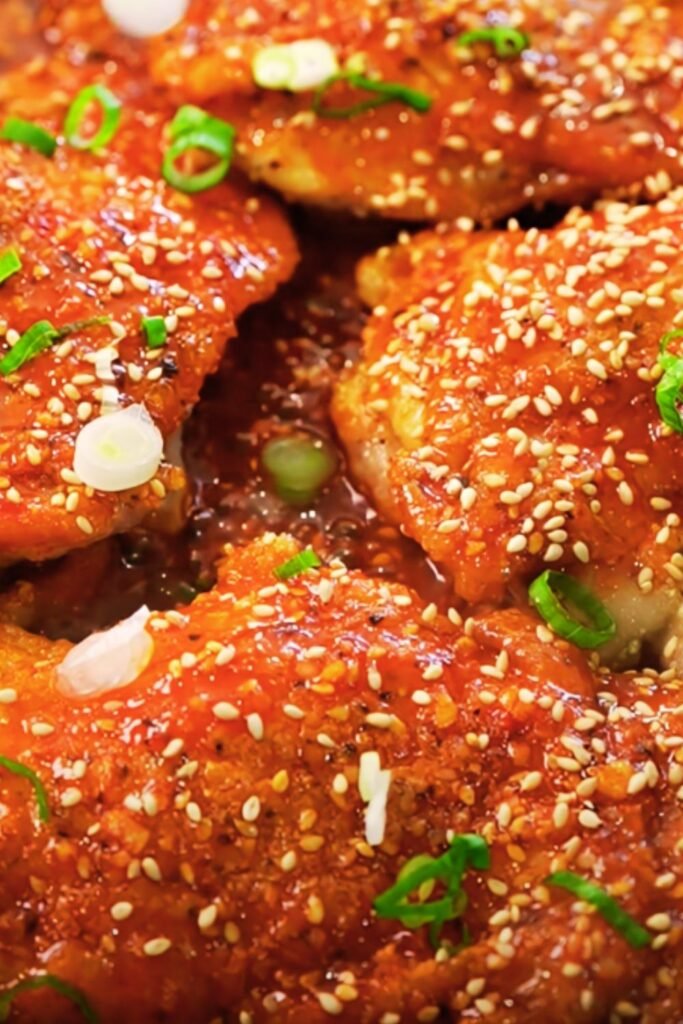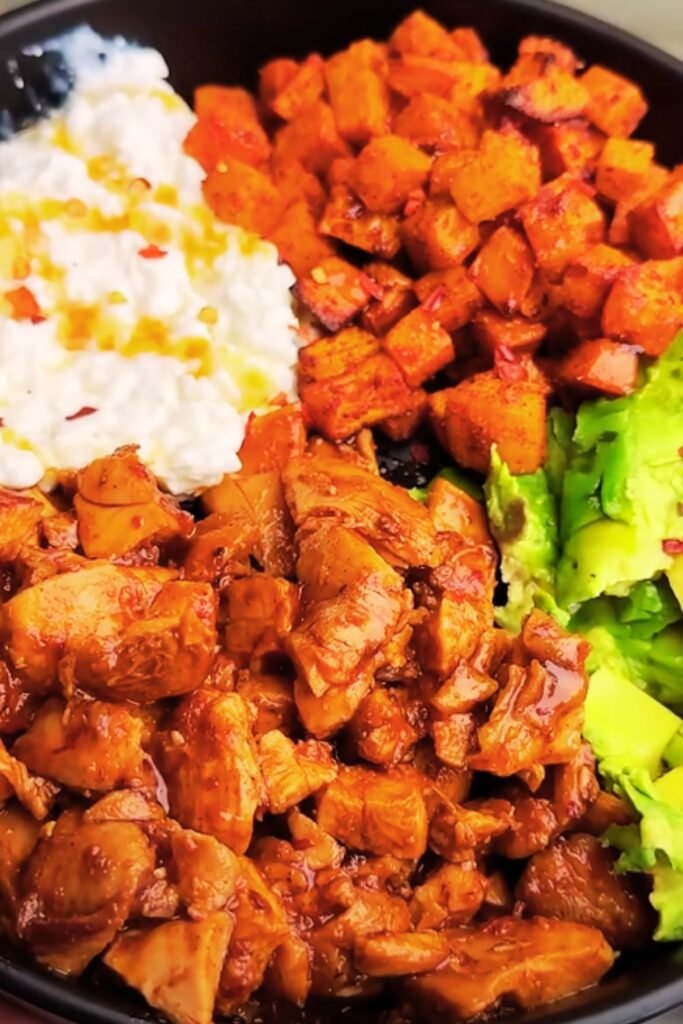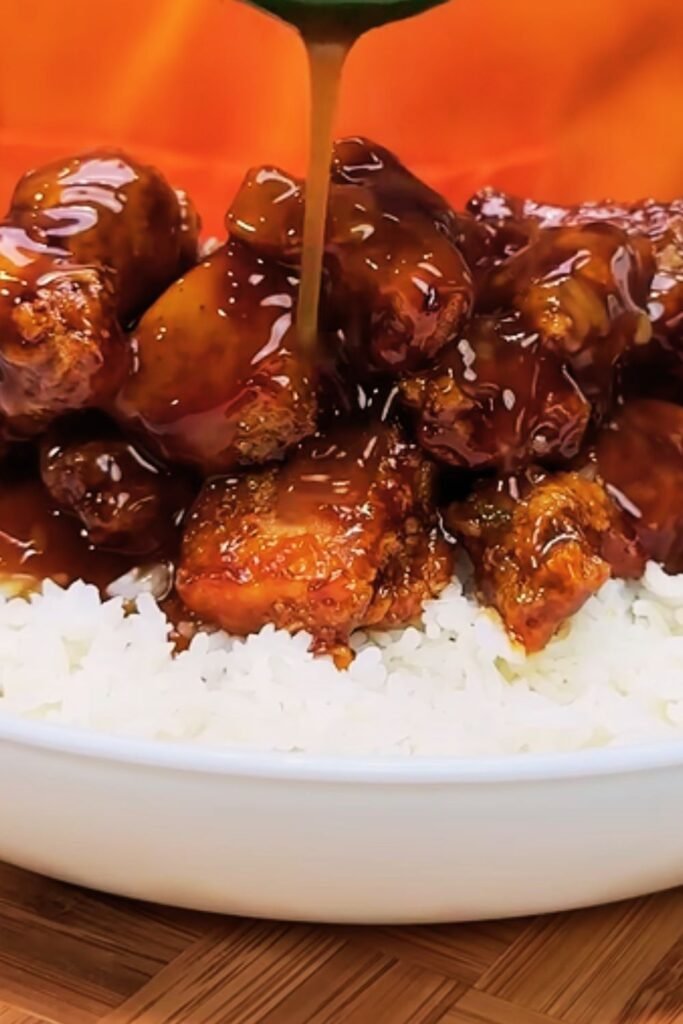I’ve been making honey garlic chicken bowls for years, and let me tell you – they’ve become my go-to recipe when I need something that’s both incredibly satisfying and surprisingly nutritious. There’s something magical about the way sweet honey mingles with savory garlic, creating a glaze that transforms ordinary chicken into something extraordinary. Today, I’m sharing everything I’ve learned about creating these perfect bowls that have impressed countless dinner guests and satisfied my family’s pickiest eaters.
What Makes Honey Garlic Chicken Bowls Special
Honey garlic chicken bowls represent the perfect marriage of sweet and savory flavors, featuring tender chicken pieces glazed in a sticky, aromatic sauce and served over a bed of fluffy rice or grains. The beauty of these bowls lies in their versatility – you can customize them with various vegetables, grains, and toppings to suit any dietary preference or seasonal availability.
The magic happens in the glaze itself. When honey meets garlic in the presence of heat, it creates a complex flavor profile that’s both familiar and exciting. The honey provides natural sweetness while the garlic adds depth and umami, creating a sauce that’s addictive without being overwhelming.
Essential Ingredients for Perfect Honey Garlic Chicken Bowls
For the Chicken and Marinade:
- Chicken thighs or breasts (2 pounds): I prefer thighs for their tenderness and flavor
- Soy sauce (3 tablespoons): Adds saltiness and umami depth
- Rice vinegar (2 tablespoons): Provides acidity to balance the sweetness
- Cornstarch (2 tablespoons): Creates a protective coating that helps the glaze stick
- Sesame oil (1 tablespoon): Adds nutty, aromatic notes
- Black pepper (1 teaspoon): Freshly ground works best
For the Honey Garlic Glaze:
- Honey (1/2 cup): Use raw, unfiltered honey for the best flavor
- Garlic (6 cloves): Fresh garlic minced finely
- Soy sauce (1/4 cup): Low-sodium preferred
- Rice vinegar (2 tablespoons): Balances the sweetness
- Ginger (1 tablespoon): Fresh grated ginger adds warmth
- Red pepper flakes (1/2 teaspoon): Optional, for heat
- Cornstarch (1 tablespoon): Mixed with water for thickening
For the Bowl Assembly:
- Jasmine rice (2 cups uncooked): Or brown rice for more nutrition
- Mixed vegetables: Broccoli, snap peas, carrots, bell peppers
- Green onions (3-4 stalks): Sliced for garnish
- Sesame seeds (2 tablespoons): Toasted for crunch
- Cilantro (1/4 cup): Fresh, chopped
Step-by-Step Preparation Guide
Preparing the Chicken
I always start by preparing my chicken properly, as this foundation determines the entire dish’s success. First, I cut the chicken into bite-sized pieces, ensuring they’re uniform for even cooking. Pat the pieces dry with paper towels – this step is crucial for achieving that perfect sear.
In a large bowl, I combine the chicken with the marinade ingredients. The key is letting the chicken marinate for at least 30 minutes, though I prefer 2-4 hours when time allows. This marination period allows the flavors to penetrate the meat while the cornstarch creates a light coating that will help the glaze adhere beautifully.
Creating the Perfect Glaze
The honey garlic glaze is where the magic happens. I whisk together honey, minced garlic, soy sauce, rice vinegar, and grated ginger in a small saucepan. The trick is to cook this mixture over medium heat, stirring constantly, until it begins to bubble and thicken slightly. This process usually takes 3-5 minutes.
For thickening, I create a cornstarch slurry by mixing cornstarch with cold water until smooth. I gradually add this to the simmering glaze while stirring continuously. The glaze should coat the back of a spoon when ready – it will continue to thicken as it cools.

Cooking the Chicken
Heat a large skillet or wok over medium-high heat with a tablespoon of oil. Once hot, add the marinated chicken pieces in a single layer. Don’t overcrowd the pan – cook in batches if necessary. I let the chicken cook undisturbed for 3-4 minutes to develop a golden crust before flipping.
Cook for another 3-4 minutes until the chicken is cooked through and golden brown on all sides. The internal temperature should reach 165°F (74°C). Remove the chicken temporarily while you prepare the vegetables.
Preparing the Vegetables
I use the same pan to cook my vegetables, taking advantage of the flavorful fond left from the chicken. Add your harder vegetables first – carrots and broccoli stems – cooking for 2-3 minutes before adding softer vegetables like bell peppers and snap peas. The vegetables should be crisp-tender, retaining their color and crunch.
Bringing It All Together
Return the cooked chicken to the pan with the vegetables. Pour the honey garlic glaze over everything, tossing gently to coat. The glaze should cling to the chicken and vegetables, creating a glossy, appetizing coating. Cook for an additional 1-2 minutes to ensure everything is heated through.

Nutritional Benefits and Health Considerations
| Nutrient | Amount per Serving | % Daily Value | Health Benefits |
|---|---|---|---|
| Protein | 35g | 70% | Muscle building, satiety |
| Carbohydrates | 58g | 19% | Energy, brain function |
| Fiber | 4g | 16% | Digestive health |
| Vitamin C | 45mg | 50% | Immune support |
| Iron | 3mg | 17% | Oxygen transport |
| Potassium | 680mg | 14% | Heart health |
| Vitamin A | 1200IU | 24% | Eye health |
| Calcium | 80mg | 8% | Bone health |
These bowls pack impressive nutritional value while satisfying comfort food cravings. The lean protein from chicken supports muscle maintenance and keeps you feeling full. The honey provides natural energy, while garlic offers antioxidants and immune-supporting properties. Adding colorful vegetables increases the fiber content and provides essential vitamins and minerals.
Customization Options and Variations
Grain Alternatives
While jasmine rice is traditional, I’ve experimented with numerous grain options. Brown rice adds fiber and nutty flavor, while quinoa provides complete protein. Cauliflower rice works beautifully for low-carb diets, and I’ve even used spiralized vegetables as a base for lighter versions.
Protein Variations
Though chicken is classic, this glaze works wonderfully with other proteins. I’ve successfully used pork tenderloin, salmon, shrimp, and even tofu for vegetarian versions. Each protein requires slight cooking time adjustments, but the glaze remains consistently delicious.
Vegetable Combinations
The vegetable possibilities are endless. I rotate through seasonal options – asparagus and peas in spring, zucchini and corn in summer, Brussels sprouts and sweet potatoes in fall. Frozen vegetables work in a pinch, though fresh provides better texture and flavor.
Spice Level Adjustments
For those who enjoy heat, I recommend adding sriracha to the glaze or including sliced jalapeños with the vegetables. Conversely, sensitive palates can omit the red pepper flakes entirely without compromising the dish’s integrity.
Advanced Tips for Perfect Results
Achieving the Perfect Glaze Consistency
The glaze should be thick enough to coat ingredients but not so thick it becomes gummy. I test consistency by dipping a spoon – it should create a thin, even coating that doesn’t immediately drip off. If too thick, add a tablespoon of water; if too thin, simmer longer to reduce.
Preventing Overcooking
Chicken can become dry if overcooked, so I use a meat thermometer to ensure accuracy. The residual heat from the glaze will continue cooking the chicken slightly after removing from heat, so I aim for exactly 165°F (74°C).
Maximizing Flavor Development
I often double the glaze recipe, using half for cooking and reserving half for serving. This ensures each bite has maximum flavor while preventing the cooking glaze from becoming too reduced.

Storage and Meal Prep Guidelines
| Storage Method | Duration | Quality Notes | Reheating Instructions |
|---|---|---|---|
| Refrigerator | 3-4 days | Best texture when components stored separately | Microwave 30-60 seconds, stirring halfway |
| Freezer | 2-3 months | Some texture loss expected | Thaw overnight, reheat gently |
| Meal Prep Containers | 5 days | Use airtight containers | Add fresh vegetables before reheating |
For meal prep success, I store components separately when possible. The cooked chicken and glaze keep well together, while vegetables maintain better texture when stored separately. Rice can be prepared in large batches and portioned throughout the week.
Serving Suggestions and Accompaniments
These bowls shine as complete meals, but thoughtful accompaniments can elevate the experience. I often serve them with:
- Pickled vegetables: Quick-pickled cucumbers or radishes add acidic brightness
- Edamame: Provides additional protein and satisfying texture
- Seaweed salad: Adds oceanic flavor and interesting texture contrast
- Steamed dumplings: For those wanting a more substantial meal
- Fresh fruit: Pineapple or mandarin oranges complement the sweet-savory flavors
Troubleshooting Common Issues
Glaze Won’t Thicken
This usually indicates insufficient cornstarch or inadequate cooking time. Create a fresh cornstarch slurry and add gradually while simmering. Remember that the glaze continues thickening as it cools.
Chicken Turns Out Dry
Overcooking is the primary culprit. Use a meat thermometer and remove chicken at exactly 165°F. Chicken thighs are more forgiving than breasts due to higher fat content.
Vegetables Are Mushy
Add vegetables in stages based on cooking time requirements. Harder vegetables like carrots need longer cooking than delicate ones like snap peas. Maintain high heat for quick cooking.
Glaze Tastes Too Sweet
Balance sweetness by adding more rice vinegar or a splash of soy sauce. The acidity cuts through sweetness while maintaining flavor harmony.
Seasonal Adaptations
Spring Version
I incorporate fresh asparagus, snap peas, and baby carrots. Fresh herbs like cilantro and mint add brightness that complements the season’s energy.
Summer Variation
Zucchini, bell peppers, and corn create a colorful, light version perfect for warm weather. I often serve this over cauliflower rice for a lighter meal.
Fall Adaptation
Sweet potatoes, Brussels sprouts, and butternut squash provide heartier, warming elements. I sometimes add a pinch of cinnamon to the glaze for seasonal warmth.
Winter Comfort
Root vegetables like parsnips and turnips create a more substantial, warming meal. I increase the ginger slightly for additional warmth.
Questions and Answers
Q: Can I make this recipe with frozen chicken? I always recommend thawing chicken completely before cooking for even results. Frozen chicken releases excess water during cooking, which can dilute the glaze and create uneven texture. Plan ahead and thaw overnight in the refrigerator.
Q: How do I prevent the honey from burning? Keep the heat at medium and stir constantly while cooking the glaze. Honey has a lower burning point than sugar, so patience is key. If the glaze starts to darken too quickly, reduce heat immediately.
Q: Can I substitute the honey with other sweeteners? Maple syrup works beautifully as a substitute, though it creates a slightly different flavor profile. Agave nectar also works, but you may need to adjust quantities as it’s sweeter than honey. Avoid artificial sweeteners as they don’t provide the same caramelization.
Q: What’s the best way to reheat leftovers? I prefer reheating in a skillet over medium heat, adding a splash of water if needed to loosen the glaze. Microwaving works but can make the chicken rubbery if overheated. Reheat gently and stir frequently.
Q: Can I make this recipe gluten-free? Absolutely! Use tamari instead of soy sauce and ensure your other ingredients are gluten-free certified. The flavor remains virtually identical with these simple substitutions.
Q: How spicy is this dish? The base recipe is mild with just a hint of warmth from fresh ginger. The red pepper flakes are optional and add gentle heat. For sensitive palates, omit them entirely; for heat lovers, add sriracha or fresh chilies.
Q: Can I prep the glaze in advance? Yes! The glaze keeps well in the refrigerator for up to one week. Reheat gently before using, adding a splash of water if it becomes too thick. This makes weeknight cooking much faster.
Q: What vegetables work best in these bowls? I prefer vegetables that maintain some crunch after cooking – broccoli, snap peas, bell peppers, and carrots are excellent choices. Avoid watery vegetables like tomatoes or cucumber, which can dilute the glaze.
Q: Can I double the recipe for meal prep? Certainly! This recipe scales beautifully. I often make double batches, storing portions in meal prep containers. The flavors actually improve slightly after a day in the refrigerator.
Q: Is this recipe suitable for children? My kids love these bowls! The sweet-savory flavor appeals to young palates, and you can adjust the garlic intensity based on their preferences. Serve over white rice with their favorite vegetables for best acceptance.
These honey garlic chicken bowls have become a staple in my kitchen because they deliver restaurant-quality flavor with home-cooked comfort. The combination of sweet honey, aromatic garlic, and tender chicken creates a meal that satisfies on every level while providing excellent nutrition. Whether you’re cooking for family dinner or meal prepping for the week, this recipe adapts beautifully to your needs and preferences. Give it a try, and I’m confident it’ll become a favorite in your household too.